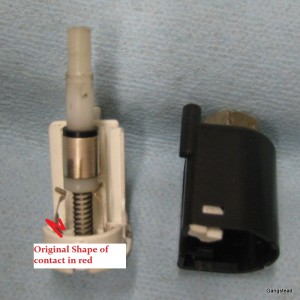I have this set of Russian Kettle bells I love to work out with. I also gave one to my mom for Christmas. When you are buying them there are the regular ones and the fancy rubber-dipped ones. The heavy ones only come in the regular type because I guess people buying big heavy blobs of iron just want the cheapest one.
I store these in the laundry room with tile floor. I always worry that I’m going to set the 40 pounder down too hard and do some damage. I’ve been looking to do a similar dip job that the others came with, but I can’t find anyone that sells a “bucket of rubber” – it’s possible I don’t know what I’m looking for.
I came across this product Plasti Dip and they show a wrench with a rubber grip so I thought I found a solution. I couldn’t find the canned version at Home Depot or Lowes, and it appears to only come in small 7 and 14 ounce cans and I reckon I’d need about a gallon to dip the kettle bell. They did have the spray on version which I guessed was equivalent. I masked off the kettle bell with some duct tape and grocery bags and sprayed on 6 layers over the course of a few days. Here it is in progress:
My results suggest that this is not the ideal application for Plasti Dip. It doesn’t take to masking since the layers form a plastic film. I can’t blame them for that, it’s exactly what the product promises.
It also did not adhere to the smooth enamel paint on the kettle bell. I’m sure the rubber on the smaller bells only stays on because it goes all the way around the body, but it would have taken a couple of cans of plasti dip to cover this up but there was another reason it wasn’t suitable for me.
It’s also not called “Rubber Dip” for a very important reason. The resulting surface was almost as hard as the metal it was covering. It’s not as rubbery as I expected, maybe the canned version is different. I’m not reviewing Plasti Dip here, it’s good for a lot of stuff, but it’s not the rubber coat I needed for the kettle bell.
Does any one know where I can get a giant quantity of rubber? What type of rubber I need? Would be interested to hear it in the comments.
Steven Gangstead








